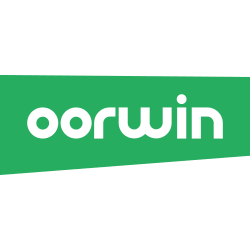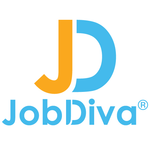Description

Bolster

erecruit
Comprehensive Overview: Bolster vs erecruit
Bolster and eRecruit are two distinct platforms serving different segments of the recruitment and human resources (HR) industry. Let's explore each one in detail:
a) Primary Functions and Target Markets
Bolster:
- Primary Functions: Bolster offers a platform that focuses on on-demand executive talent and board placements. It connects companies with experienced executives for interim, fractional, or advisory roles. The platform facilitates quick matching, seamless integration, and provides a wide range of executive talent.
- Target Markets: Bolster targets companies, primarily startups and growing businesses, that need flexible executive talent. This includes tech companies, venture-backed firms, and businesses undergoing rapid change or scaling efforts. It also targets executives looking for flexible work arrangements or interim roles.
eRecruit:
- Primary Functions: eRecruit is a staffing and recruitment software platform designed to streamline the workflow of staffing firms and recruitment agencies. It provides tools for applicant tracking, client and candidate management, onboarding, and integration with other HR solutions.
- Target Markets: eRecruit targets staffing agencies, recruitment firms, and HR departments seeking to optimize their recruiting process. It's particularly suited for larger firms that deal with high volumes of candidates and need comprehensive software solutions to manage their talent acquisition processes.
b) Market Share and User Base
-
Bolster: As a relatively new entrant focusing on niche executive placements, Bolster's market share is smaller compared to the more established recruitment platforms. However, it is gaining traction among startups and tech firms due to its unique proposition of providing flexible executive staffing.
-
eRecruit: With a longer presence in the recruitment industry, eRecruit holds a more substantial market share among staffing solutions. Its user base consists largely of recruitment firms and agencies that require robust candidate management tools and integrations.
c) Key Differentiating Factors
-
Functionality and Focus: Bolster specializes in the flexible placement of executive roles and is designed to meet the specific needs of companies looking for senior-level expertise on a temporary or part-time basis. In contrast, eRecruit focuses on comprehensive recruitment solutions for a wider range of positions, catering mainly to recruitment agencies and staffing firms.
-
Target Audience: Bolster appeals to startups and fast-growing companies needing interim executives, while eRecruit is aimed at established staffing agencies and HR departments requiring a full-suite recruitment platform.
-
Flexibility and Speed: Bolster emphasizes rapid deployment and flexible engagement models for executives, providing businesses with quick access to high-level talent without long-term commitments. On the other hand, eRecruit provides a stable and integrated system for managing full-cycle recruitment processes, which is essential for firms dealing with large volumes of candidates and complex hiring needs.
In summary, Bolster and eRecruit serve different segments of the HR and recruitment market, with distinct functionalities and target audiences. Bolster's niche focus on executive placements stands out in terms of flexibility, while eRecruit offers a comprehensive solution primarily for established recruitment firms.
Contact Info

Year founded :
2016
Not Available
Not Available
Canada
Not Available

Year founded :
2007
Not Available
Not Available
Norway
Not Available
Feature Similarity Breakdown: Bolster, erecruit
As of my last training data in October 2023, "Bolster" and "eRecruit" are both platforms designed to assist in recruitment and talent management processes. Although I don't have the capability to directly access or browse product-specific databases for the latest updates, I can provide a general overview based on widely available information up to that point.
a) Common Core Features
Both Bolster and eRecruit offer several core features commonly found in recruitment and talent management platforms:
-
Applicant Tracking System (ATS): Both platforms provide comprehensive ATS functionalities to streamline the recruitment process, from application submission to hiring decisions.
-
Candidate Relationship Management (CRM): They offer tools to manage relationships with candidates, maintaining engagement throughout the recruitment process.
-
Job Posting and Distribution: Both systems allow users to post job openings across multiple job boards and platforms seamlessly.
-
Resume Parsing: They include technology to parse resumes and extract relevant candidate information, facilitating easier review and decision-making processes.
-
Interview Scheduling: Both platforms offer tools to schedule and manage interviews, typically integrating with calendar applications.
-
Reporting and Analytics: Both provide data analytics capabilities, offering insights into recruitment trends, process efficacy, and key performance metrics.
-
Collaboration Tools: They include features for team collaboration, enabling recruiters and hiring managers to communicate and make decisions collectively.
b) User Interface Comparison
-
Bolster UI: Known for its emphasis on user-friendliness, the interface is typically designed to be intuitive, making it accessible even for users with less technical expertise. The design tends to focus on simplicity and ease of navigation, with dashboards that provide quick insights.
-
eRecruit UI: eRecruit often features a more robust interface tailored to large enterprises with complex recruitment needs. It may provide more detailed functionalities, but can also come with a steeper learning curve due to its depth and breadth of features.
Both interfaces are likely to be customizable to some extent, allowing companies to tailor the appearance and functionality to better fit their specific requirements.
c) Unique Features
-
Bolster Unique Features:
- Gig Economy Integration: Bolster places a stronger emphasis on integrating freelance and gig economy roles into its recruitment processes, reflecting trends in flexible workforce management.
- Board Search Capabilities: Bolster sometimes emphasizes tools for finding executive and board members specifically, which might be less emphasized in more general recruitment platforms.
-
eRecruit Unique Features:
- Enterprise-friendliness: eRecruit often offers more extensive integrations with existing enterprise systems including HRIS and ERP systems, reflecting its appeal to larger organizations.
- Highly Customizable Workflows: eRecruit may offer greater customization capabilities for recruitment workflows, allowing companies to adapt the software closely to their unique processes.
For the most accurate and up-to-date comparison, it's advisable to access the latest product documentation, features lists, and possibly demo versions of each platform to experience their capabilities firsthand.
Features

Not Available

Not Available
Best Fit Use Cases: Bolster, erecruit
Bolster and eRecruit are both staffing and recruitment software solutions, but they cater to different needs and scenarios based on company size, industry, and specific requirements. Let's break down their best fit use cases:
Bolster
a) Best Fit Use Cases for Bolster
-
Startups and Small to Medium-sized Enterprises (SMEs): Bolster is often ideal for startups and SMEs looking for scalable recruitment solutions that can grow with their business. Its user-friendly design and affordability make it accessible for companies with limited HR departments or resources.
-
Project-Based Hiring: Bolster is a good fit for businesses involved in project-based work that requires hiring skilled temporary or freelance staff. It offers tools to manage and onboard contract and temporary workers efficiently.
-
Gig Economy and Modern Workforce Models: Companies that rely heavily on gig workers or operate with a flexible workforce model can benefit from Bolster's capabilities to manage non-traditional employment terms and arrangements.
-
Industries with High Seasonal Demand: Industries such as retail, hospitality, or events, which experience fluctuations in workforce needs, can leverage Bolster for rapid deployment and scaling of staff as demand changes.
d) Industry Verticals and Company Sizes
- SMEs and Startups: Bolster caters primarily to smaller organizations.
- Industries: Technology startups, creative agencies, small retail chains, and businesses in the gig economy.
eRecruit
b) Preferred Scenarios for eRecruit
-
Large-Scale Enterprises: eRecruit is designed for larger enterprises that need a comprehensive and customizable staffing software capable of handling high volumes of recruitment and complex organizational structures.
-
Staffing and Recruitment Agencies: eRecruit provides robust tools for agencies that manage recruitment processes for multiple client organizations, offering features for client management, candidate tracking, and placement reporting.
-
Enterprise Staffing Solutions: Companies that handle a high volume of permanent placements, contingent staffing, and managed service provider (MSP) solutions would benefit from eRecruit’s sophisticated systems and integrations.
-
Industries with Specialized Staffing Needs: Industries like healthcare, finance, and engineering, which have specialized requirements and compliance needs, can utilize eRecruit to ensure regulatory adherence and manage candidate workflows effectively.
d) Industry Verticals and Company Sizes
- Large Enterprises and Staffing Agencies: eRecruit is tailored for large companies and professional recruitment agencies.
- Industries: Healthcare, finance, engineering, and sectors requiring regulatory oversight.
Summary
- Bolster is optimal for small to medium businesses, project-based work environments, and companies leveraging non-traditional workforce models.
- eRecruit is suited for large enterprises, staffing agencies, and industries with specialized and high-volume staffing needs.
Each solution provides unique tools and interfaces designed to enhance specific recruitment processes, making it crucial for businesses to choose based on their size, industry, and specific recruitment challenges.
Pricing

Pricing Not Available

Pricing Not Available
Metrics History
Metrics History
Comparing undefined across companies
Conclusion & Final Verdict: Bolster vs erecruit
To provide a conclusive comparison and final verdict for Bolster and eRecruit, it is important to evaluate each product based on key factors such as features, scalability, user-friendliness, cost-effectiveness, customer support, and integration capabilities.
Conclusion and Final Verdict:
a) Best Overall Value:
Determining the best overall value between Bolster and eRecruit depends largely on the specific needs and context of the user. However, a general assessment can be made:
-
Bolster: Bolster may offer better value for small to medium-sized businesses looking for a solution that's easy to implement, cost-effective, and integrates well with existing systems. It's particularly advantageous if the business seeks to streamline specific recruitment processes and enhance collaboration within the hiring team.
-
eRecruit: eRecruit might be the preferred choice for larger enterprises or staffing agencies that require a robust, comprehensive system capable of handling high-volume recruitment and complex workflows. It often provides more advanced features and greater scalability which could justify any higher costs or complexity in set-up.
b) Pros and Cons:
Bolster:
-
Pros:
- Typically more affordable and cost-effective for smaller firms.
- User-friendly interface with a gentle learning curve.
- Good integration capabilities with other HR or business systems.
- Flexible pricing models that might align with smaller or growing businesses.
-
Cons:
- May lack some advanced features required for highly complex recruitment needs.
- Might not scale as well with very large enterprises or complex organizational structures.
eRecruit:
-
Pros:
- Comprehensive features suitable for large-scale recruitment operations.
- Highly customizable to fit specific organizational processes and needs.
- Built for scalability, making it a strong choice for large enterprises.
- Offers extensive reporting and analytics that can provide deeper insights into recruitment metrics.
-
Cons:
- Generally requires a larger investment both in time and money.
- Could have a steeper learning curve due to its complexity and feature set.
- Potentially more resource-intensive in terms of implementation and management.
c) Recommendations:
-
For Smaller Businesses or Startups: Bolster is likely the better choice as it provides a good balance of functionality, cost, and ease of use. It's a smart choice if you are looking to keep things simple and need a tool to enhance your recruitment without overwhelming your resources.
-
For Larger Enterprises and Agencies: eRecruit is recommended due to its ability to manage larger volumes and offer extensive customizations that align with complex recruitment strategies. The investment may be justified by the advanced capabilities and scalability it provides.
-
Assess Specific Needs: Users should carefully map out their current recruitment challenges and long-term goals. This analysis can highlight which features are must-haves and help in deciding which product aligns better with their strategy.
-
Trial and Feedback: If possible, take advantage of any free trials or demo versions. Gather feedback from key stakeholders who will be using the system regularly to ensure the solution meets their needs and expectations.
In conclusion, while both Bolster and eRecruit are capable products, the best choice hinges on the scale of operations and specific recruitment needs. Users should weigh the pros and cons in relation to their organization’s size, complexity, and long-term plans to make an informed decision.
Add to compare




